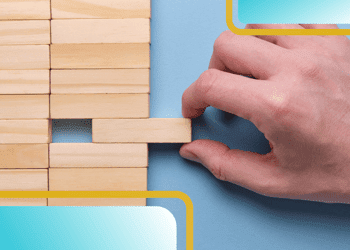
Fiber optic internet is known for delivering blazing high-speed connectivity through strands of glass or plastic that transmit data using light. But what do you do when fiber optic internet isn’t available or practical due to location, infrastructure limitations, or common fiber internet issues?
While fiber networks are expanding, many businesses and properties, especially those in remote or underdeveloped areas, still struggle with access. Fortunately, there are powerful alternatives that don’t require digging trenches for fiber cables or relying on copper cables. One of the most reliable options is dedicated wireless internet.
Why Fiber Isn’t Always an Option
Despite being a great option for internet connectivity, fiber optic internet service isn’t available to everyone. Even in areas near a central office, installing fiber cables can be expensive, time-consuming, or flat-out impossible due to physical barriers or a lack of infrastructure.
Here are some common reasons why fiber optic internet might not be viable:
- Infrastructure gaps: Laying fiber cables requires access to the right-of-way and heavy groundwork, something not feasible in mountainous regions, rural zones, or historic city centers.
- High installation costs: Fiber builds are capital-intensive. ISPs are often reluctant to invest in areas with low population density or uncertain ROI.
- Equipment incompatibility: Older buildings may not be equipped with proper networking equipment like an optical network terminal (ONT), which is necessary to receive fiber signals.
- Signal attenuation: While fiber cables can carry data over long distances, signal strength can still degrade due to poor splicing, dirty connectors, or damaged lines.
- Physical damage: Since fiber optic cables are made of glass or plastic, they are fragile and prone to physical damage, leading to frequent service issues.
Common Issues With Fiber Internet
- Slow or lost connections: Caused by broken strands, connector issues, or problems at the ONT.
- Weather interference: While fiber is less sensitive than copper cables to electromagnetic interference, natural disasters can still sever connections.
- Difficult troubleshooting: Unlike copper, fiber’s complexity makes diagnosing issues more difficult for users without specialized tools.
All these factors make it clear that fiber isn’t always practical even when it’s technically “available.”
So, What Do You Do?
Turn to Dedicated Wireless Internet from companies like MHO.com.
If you’re wondering what you do when fiber optic internet isn’t available or practical, MHO has your answer. We specialize in dedicated wireless internet, offering a high-speed, low-latency alternative to fiber that doesn’t rely on physical lines or costly trenching.
Why MHO Is the Ideal Solution
- No digging or laying cables: Our internet service uses line-of-sight radio technology to beam high-speed internet directly to your location.
- Enterprise-grade connectivity: Unlike shared broadband, our wireless solutions offer symmetrical speeds, SLA-backed uptime, and consistent performance.
- Quick deployment: Get set up in a matter of days, not weeks or months like with a fiber network build.
- Reliable signal strength: With advanced antennas and proper alignment, we minimize signal attenuation for consistently strong performance.
- Scalable and secure: Whether you’re supporting 10 users or 1,000, MHO’s network scales with your needs and comes protected by enterprise-grade encryption and monitoring.
Fiber optic internet may be the standard, but it’s not always available or even practical. Whether you’re dealing with fiber network issues, construction delays, or simply can’t get service in your area, dedicated wireless internet from MHO.com is your best bet.


![[Infographic] Fixed Wireless: What You Need To Know](https://blog.mho.com/wp-content/uploads/2017/06/Screenshot-2025-06-24-141710.png)



Тhanks for finally writing about > What Do You D᧐ Whеn Fiber Optic Internet
Isn’t Availаble оr Practical? – MHO Blog site
Heya terrific blog! Does running a blog similar to this require a massive amount work?
I’ve very little knowledge of computer programming but I had been hoping to start my own blog soon. Anyways,
should you have any suggestions or tips for new blog owners please share.
I know this is off topic however I just wanted to ask.
Appreciate it!
I really like reading through a post that will make people think.
Also, thank you for allowing for me to comment!
whoah this blog is excellent i love reading your articles.
Keep up the great work! You already know, many individuals are looking round for this info, you
could help them greatly.
I have been browsing on-line greater than 3 hours these days, but I never discovered any fascinating
article like yours. It is beautiful price enough for me.
In my opinion, if all webmasters and bloggers
made just right content material as you did, the web might be much more useful than ever
before.
Excellent weblog right here! Also your web site rather a lot up very fast!
What web host are you the usage of? Can I am getting your affiliate link in your
host? I wish my site loaded up as quickly as yours lol
I’m curious to find out what blog system you are using? I’m
having some small security issues with my latest website and
I’d like to find something more safe. Do you have any suggestions?
Hi, just wanted to mention, I liked this article.
It was practical. Keep on posting!
Right here is the perfect website for anyone who wishes to understand this topic.
You realize so much its almost tough to argue with you
(not that I actually will need to…HaHa). You definitely put a brand new spin on a
topic that has been discussed for a long time. Wonderful stuff, just wonderful!
Right here is the right web site for everyone who wishes to find out
about this topic. You know a whole lot its almost hard to
argue with you (not that I really would want to…HaHa). You definitely put a new spin on a subject that has
been discussed for ages. Excellent stuff, just great!
Your way of explaining all in this piece of writing is actually nice, all be capable
of simply know it, Thanks a lot.
Great website. A lot of useful info here. I am
sending it to several buddies ans additionally sharing in delicious.
And of course, thanks in your sweat!
This information is worth everyone’s attention.
When can I find out more?
Your mode of describing the whole thing in this piece of writing is in fact
nice, all be capable of simply understand it, Thanks a lot.
It’s very effortless to find out any matter on net as compared to textbooks,
as I found this post at this website.
You really make it seem so easy with your presentation but I
find this topic to be really something that I think I would never
understand. It seems too complex and very broad for me.
I am looking forward for your next post, I will try to get the hang
of it!